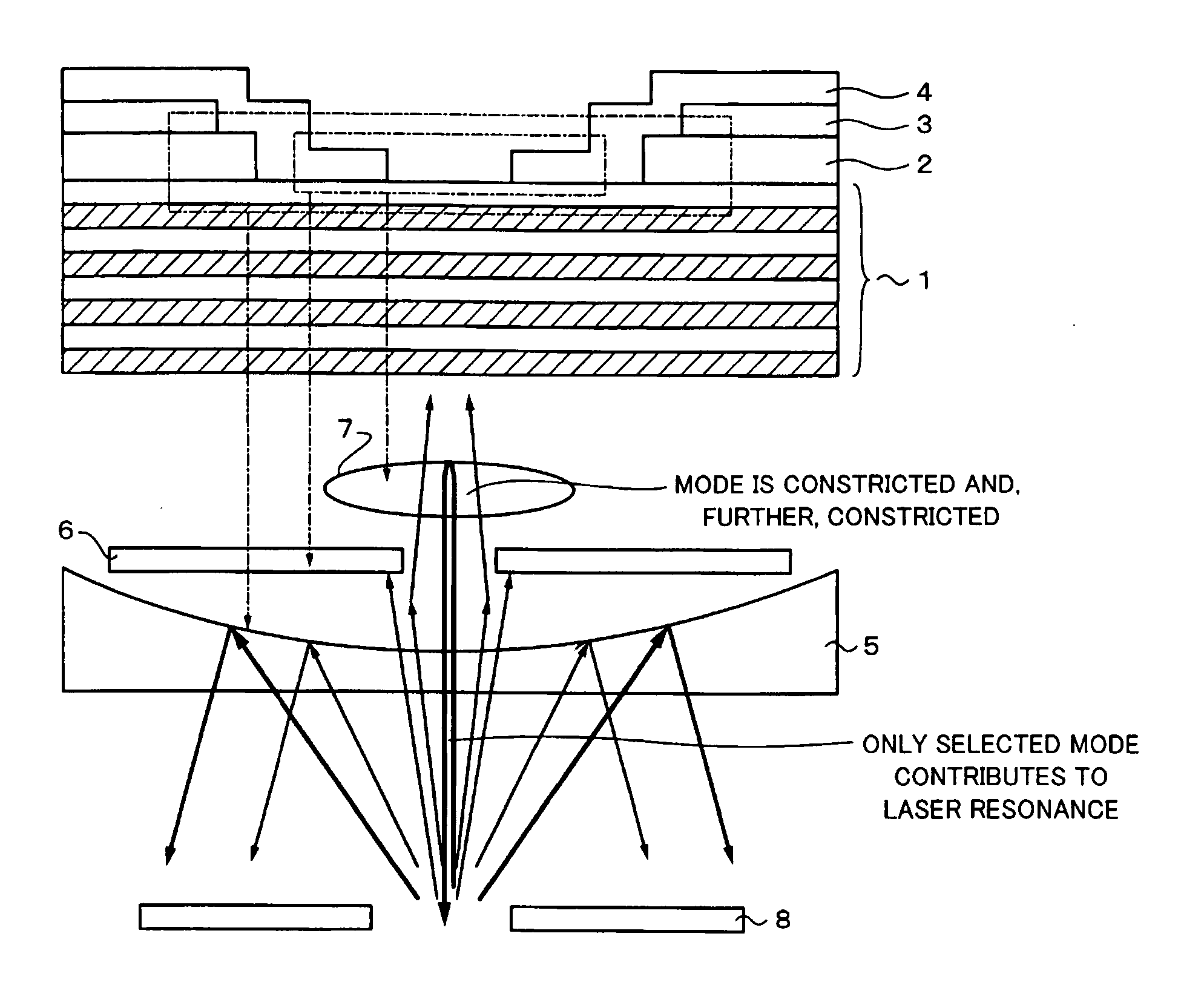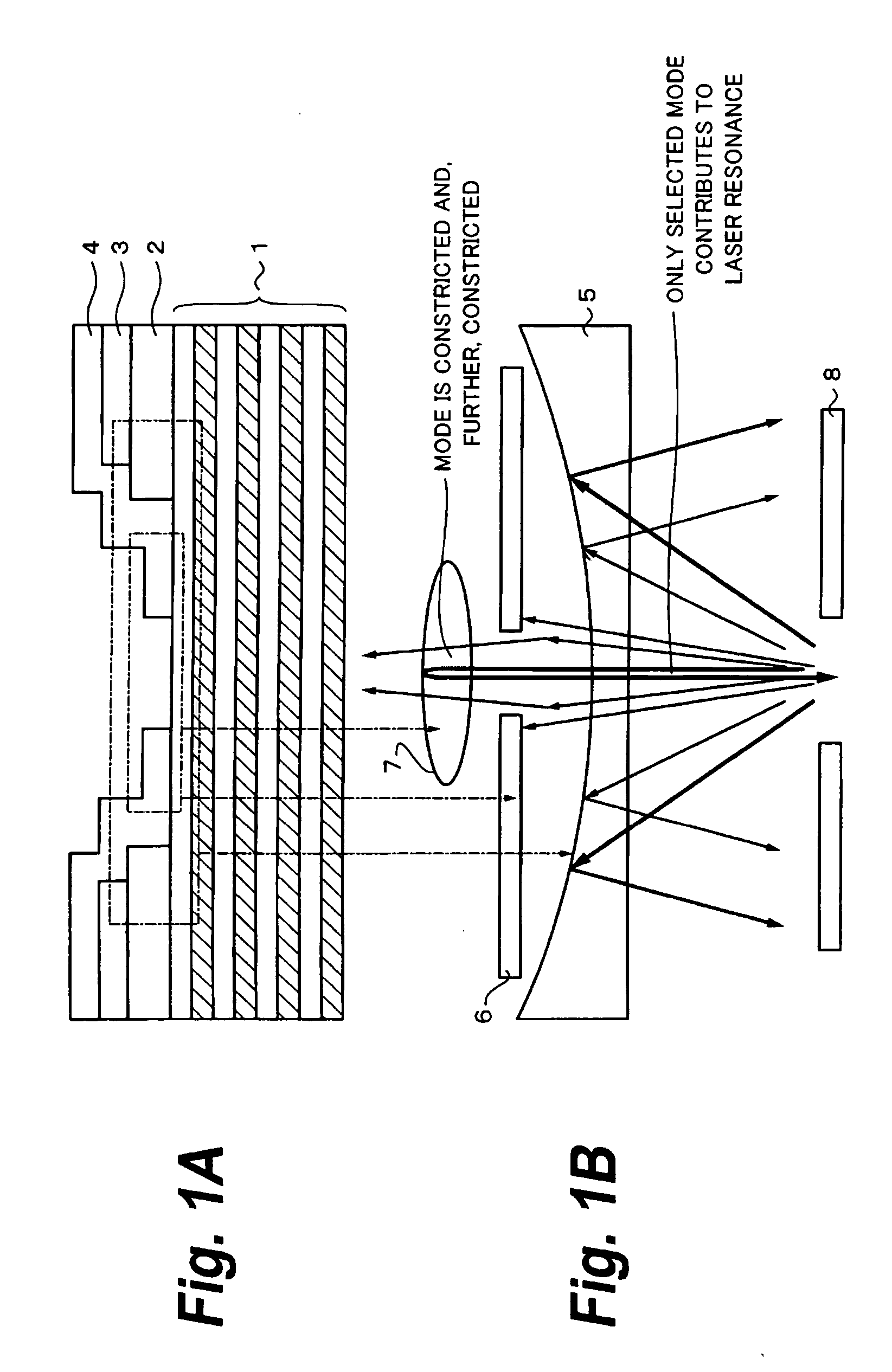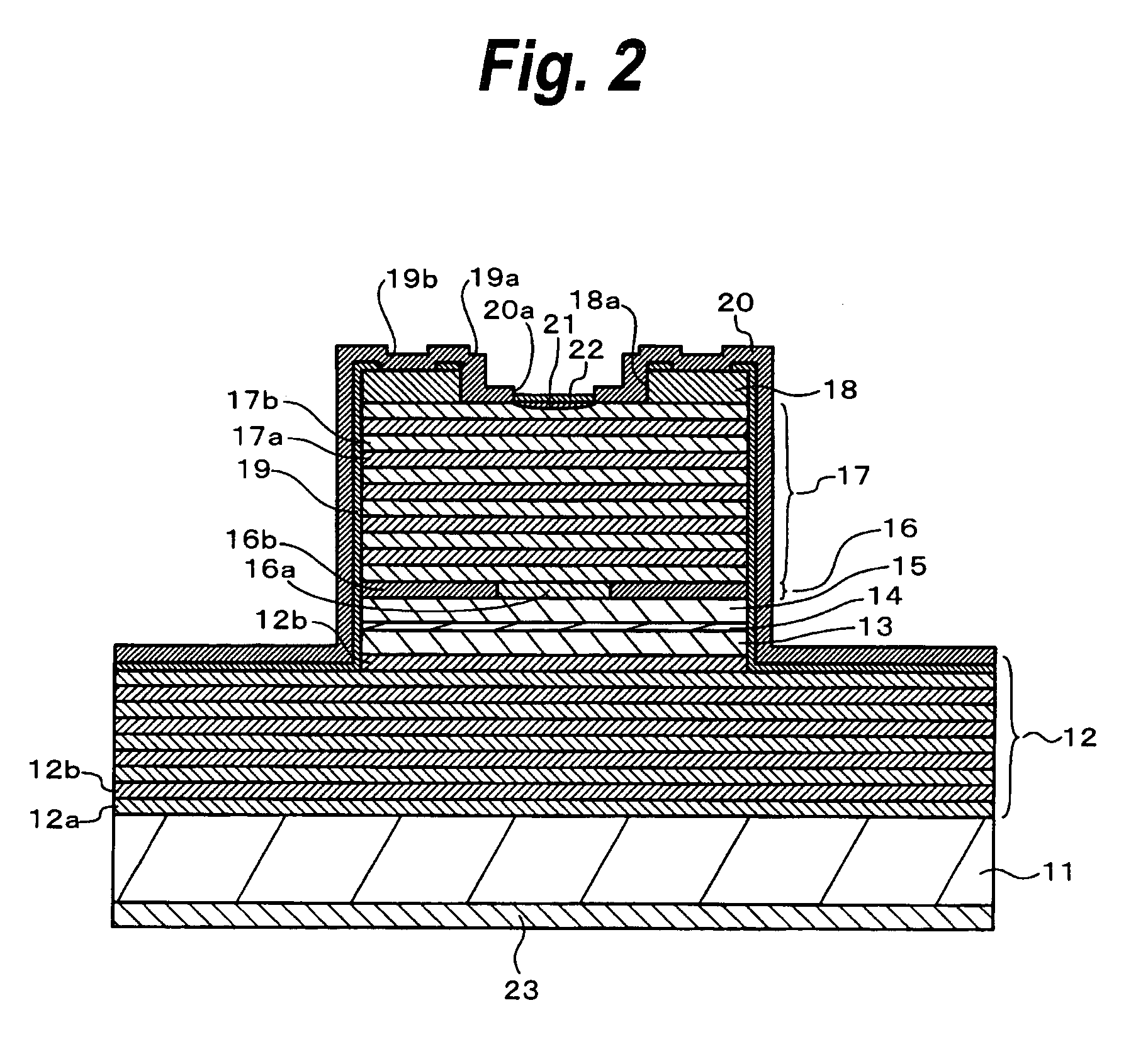Surface emitting semiconductor laser, its manufacturing method, and manufacturing method of electron device
a manufacturing method and semiconductor technology, applied in semiconductor devices, lasers, semiconductors, etc., can solve the problems of difficult high-frequency driving, difficult high-frequency driving, and difficult control of lateral mode oscillation, etc., to reduce current constriction diameter, easy to manufacture, and high yield
- Summary
- Abstract
- Description
- Claims
- Application Information
AI Technical Summary
Benefits of technology
Problems solved by technology
Method used
Image
Examples
Embodiment Construction
[0054] Embodiments of the invention will be described hereinbelow with reference to the drawings. The same or corresponding portions in all of the drawings of the embodiments are designated by the same reference numerals.
[0055]FIG. 2 is a cross sectional view showing a surface emitting semiconductor laser according to the embodiment of the invention. FIG. 3 is a plan view of a mesa post portion of the surface emitting semiconductor laser. FIG. 4 is an enlarged cross sectional view of portions near a light outgoing portion of the surface emitting semiconductor laser.
[0056] As shown in FIGS. 2 to 4, in the surface emitting semiconductor laser, for example, an n-type DBR layer 12, a lower clad layer 13, an active layer 14 as a light-emitting layer, an upper clad layer 15, a current constriction layer 16, a p-type DBR layer 17, and a p-type contact layer 18 are sequentially laminated on an n-type semiconductor substrate 11 like an n-type GaAs substrate.
[0057] The n-type DBR layer 12 ...
PUM
 Login to View More
Login to View More Abstract
Description
Claims
Application Information
 Login to View More
Login to View More - R&D
- Intellectual Property
- Life Sciences
- Materials
- Tech Scout
- Unparalleled Data Quality
- Higher Quality Content
- 60% Fewer Hallucinations
Browse by: Latest US Patents, China's latest patents, Technical Efficacy Thesaurus, Application Domain, Technology Topic, Popular Technical Reports.
© 2025 PatSnap. All rights reserved.Legal|Privacy policy|Modern Slavery Act Transparency Statement|Sitemap|About US| Contact US: help@patsnap.com



